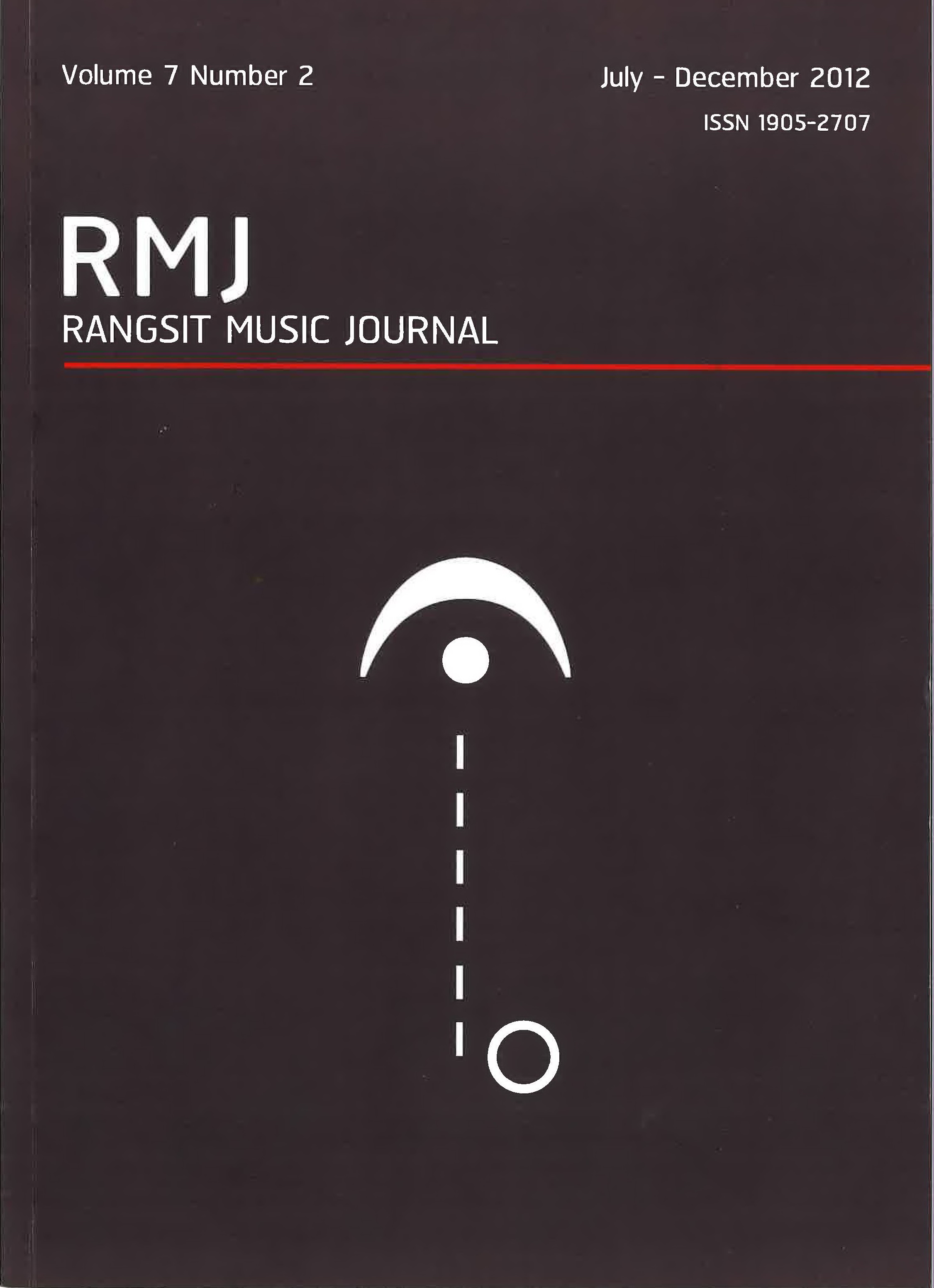บทเพลงและการเมือง: ซิมโฟนีหมายเลข 9 (คอราลซิมโฟนี) ของ ลุดวิก ฟาน เบโธเฟน (1824) มากกว่า “เพลงสรรเสริญแด่ความสุข "เพลงแห่งมวลมนุษย์ชาติแห่งสันติภาพ การให้อภัยและเสรีภาพ
Keywords:
Choral Symphony, Ludwig van Beethoven, Symphony No.9Abstract
Since the time of the first performance of Ludwig van Beethoven's Ninth Symphony in Vienna in May 1824, everything has been pretty much said and written about this monumental work. The choral symphony–so called because of the significant presence of human voices in the fourth movement–now belongs to the myth of a composer who, despite his deafness, was able to express his inner music in a monumental and symbolic work. The An die Freude (“to joy”) movement, in the form of a joyous song composed to a text by Friedrich von Schiller (1759-1805), represented at the beginning of that century one of the signs of triumphant German nationalism. During the next century, the symphony became associated with the defence of the values of European civilization and the political history of Europe in the process of construction. After reviewing the history of the symphony, this article shows that the Ode to Joy is no longer limited to European ownership and to being a symbol of European Union. It is nowadays a hallmark of a growing commitment to democratic values, the sign of an increasing desire for freedom in
almost all countries of the world. Beethoven's hymn is a universal music seen–and recognized–in the defence of democratic values, those of liberty, equality of all people and respect for differences between them.
References
2. Cooper, B. Beethoven. New York: Oxford University Press, 2000.
3. Geiringer, C. Haydn: A Creative Life in Music. Berkeley: University of California Press, 1982.
4. Gillespie, J. Five Centuries of Keyboard Music. New York: Dover, 1972.
5. Hamer, L. “Haydn’s Sonata in E-flat Major, Hob XVI: 52 and the Influence of C.P.E. Bach.” Accessed December12, 2012. http://www.haydnproject.org/index.php?id=40.
6. Heartz, D. Mozart, Haydn and Early Beethoven. New York: W. W. Norton & Company, 2009.
7. Jones, D. W., ed. Oxford Composer Companions: Haydn. New York: Oxford University Press, 2002.
8. Landon, H.C.R. “Three Piano Sonatas for Therese Jansen.” Joseph Haydn: Chronicles and Works IV (1995): 439-452.
9. Morris, E. Beethoven: The Universal Composer. New York: HarperCollins, 2005.
10. Moss, L. K. “Haydn’s Sonata Hob. XVI: 52 (ChL. 62) in E-flat Major: An Analysis of the First Movement.” Haydn Studies (1981): 496-501.
11. Newman, W. S. The Sonata in the Classic Era. New York: W. W. Norton & Company, 1983.
12. Rosen, C. Beethoven’s Piano Sonatas: A Short Companion. London: Yale University Press, 2002.







